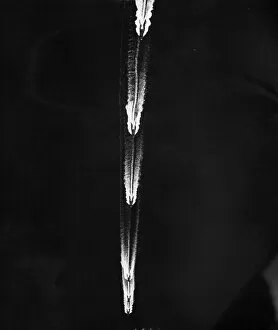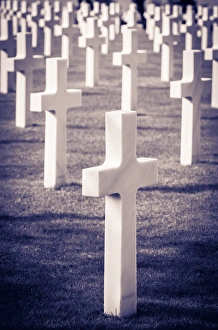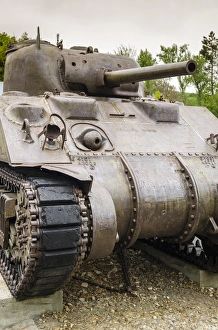At 1:30 a. m on the morning of June 6th, 1944 British and American airborne troops descended upon the shores of Southern France, marking the beginning of the Allied invasion. Led by General Jean de Lattre de Tassigny, Commander in Chief of the French Forces in Southern, these brave soldiers fought to liberate German-occupied towns and bring freedom to this war-torn region. As they advanced through Cannes, civilian residents cheered their entry with overwhelming joy and gratitude for their deliverance from oppression. The scene in Collobrieres was no different; located just 21 miles east of Toulon, it became a vibrant hub filled with hope as Allied forces marched through its town square. The picture taken six hours before the first landings captured both anticipation and determination etched on every soldier's face. Meanwhile, Douglas C47 Dakotas flew in formation over Wavre, Belgium - a testament to the international collaboration that made this invasion possible. Canadian troops found solace under hedges in Normandy as they rested amidst fierce battles during World War II Invasion of France. However, not all who embarked on this noble mission would return home alive. Omaha Beach witnessed countless sacrifices as graves at Colleville-sur-Mer stood solemnly overlooking its sandy shores. These graves serve as a poignant reminder of the price paid for freedom by those courageous souls who gave their lives so that others may live without tyranny. The Allied invasion brought about liberation but also left behind scars that time cannot erase. Yet within these scars lie stories of heroism and resilience that will forever be etched into history.











